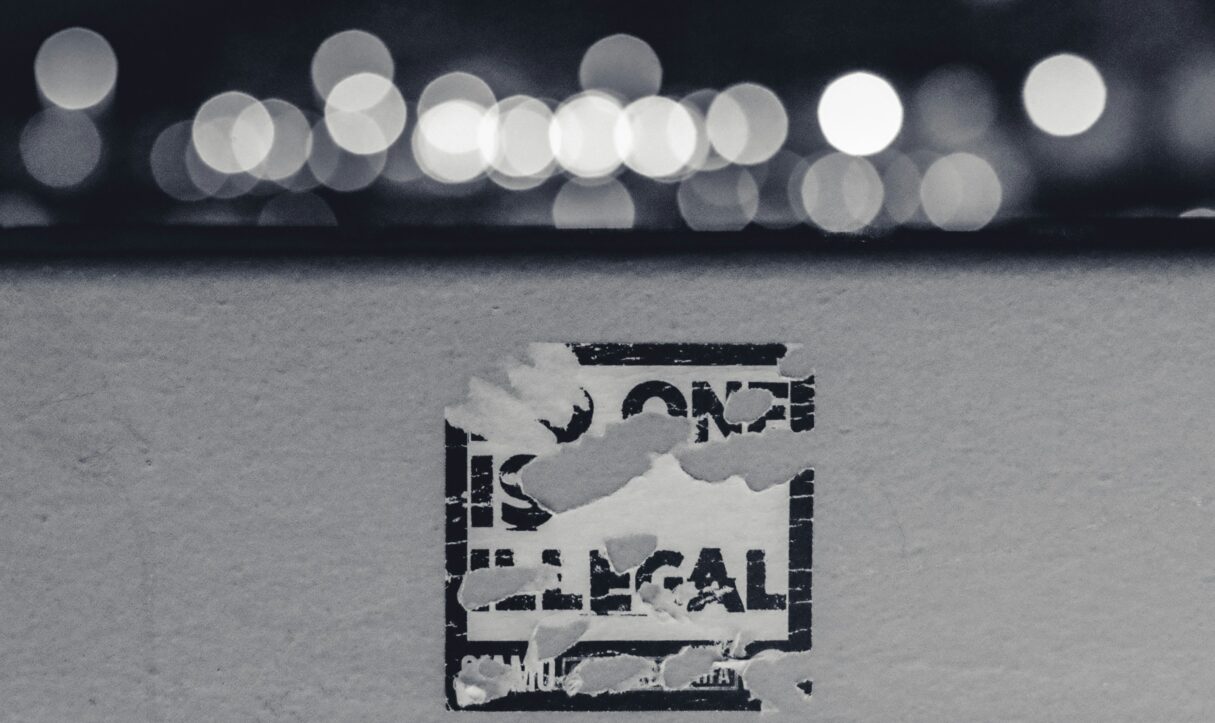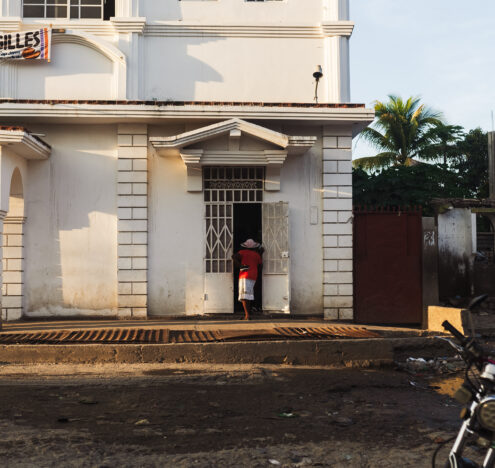In 2019, US Immigration and Customs Enforcement agents told Sergei Kachenkova, 71, and his wife, Marina, 64, that they needed to leave the country. This wasn’t the first time.
Kachenkova and his wife have spent most of their lives as lawful residents of the United States, but a decision made by the first Trump administration led to a change in their residence status that deprived them of the Social Security and Medicaid they each worked to earn for more than 25 years.
With the incoming second Trump administration’s promises of mass deportations, the Kachenkovas are afraid that they will be swept up in the wave of removals, and face a unique challenge if they are — they have no native country to be removed to.
Stateless
Kachenkova moved to the United States with Marina in Sep. 1991, just one month after their native Latvia declared its independence and began its secession from the Soviet Union. The Kachenkovas entered the US with Latvian passports and identification issued by the Soviet Union, which were, at that point, rendered null and void.
This meant that Kachenkova had no documents to prove that he was a citizen of Latvia, or any other country. Under international law, he was now considered “stateless.”
Kachenkova is among an estimated 218,000 stateless people residing in the US. New York, where Kachenkov lived for several years, has one of the country’s largest concentrations of stateless people, just behind California.
Anti-immigrant policies during the first Trump administration exacerbated the already precarious legal status of stateless people in the US. Trump has now reentered office with messaging centered around immigration issues, and stateless individuals and other migrants are concerned about what’s in store for them in the coming four years.
With no legal framework to gain naturalization, Kachenkova was unable to apply for citizenship, and after 15 years of trying to obtain asylum, his application was denied in 2007. ICE ordered him and his wife to leave the country, but neither Russia nor Latvia allowed them to return, or agreed to provide them with travel documents.
There are an estimated 218,000 stateless people residing in the US.
With nowhere to go, Kachenkova and his wife received an Order of Supervision in 2012, allowing them to remain in the country under the supervision of US Immigration and Customs Enforcement (ICE). Under their current status, Kachenkova and his wife are required to check in regularly with the nearest ICE office.
Kachenkova’s status enabled him to access benefits like a work permit, as well as Medicare and Social Security, that they have used since retiring and moving to Alabama — especially to deal with his wife’s disability and rare blood disorder.
But that was before the first Trump administration. Upon assuming office in 2017, Trump penned a series of executive orders that prioritized the detention of “removable aliens” and stripping their social benefits.
After a routine check-in with ICE agents in Jun. 2019, Kachenkova and his wife’s orders of supervision were revoked. They received a new removal order, which meant that their access to Social Security and Medicare was terminated, and they were told to leave the country in 90 days.
Kachenkova told Inkstick that he asked the ICE agents where he and his wife were supposed to go without a country to call home.
“I [don’t] care where you go,” he said the officer responded, “Walk to the Mexican border, or walk to the Canadian border, just get out of my country.”
The Biden administration did away with many of the hard-line immigration policies of the Trump regime, and the Kachenkovas’ supervision orders were reinstated in 2022, as was their access to social security and Medicare.
Not all stateless people were so lucky.
Detention and Deportation
For some, like former Pennsylvania resident Mamadu Balde, Trump’s directive meant detention and deportation. Balde came to the US as a refugee and sought asylum in the US during Sierra Leone’s civil war in 1999, but he lacked any documentation proving citizenship or right to travel.
Balde had already been held in ICE custody after his original appeal for asylum failed in 2011. At that time, he spent nine months in detention despite a 2001 Supreme Court ruling limiting ICE detention to six months for someone who hasn’t been claimed by another country.
He was released in 2012, only to be detained again after a check-in with ICE supervisors in 2017, and held in prison pending removal.
On his second go-around in ICE custody, Sierra Leone again rejected Balde’s deportation from the US But after the Trump administration threatened sanctions on countries refusing to accept deportees, Sierra Leone changed its tune and authorized Balde’s removal, forcing him to leave behind the family, home, and career that he had made in the US
Balde is not the first stateless person to experience repeated detention, and he certainly is not the last. According to ICE statistics, there are currently 24 stateless people held at the agency’s facilities across the country. This number, however, may barely scratch the surface of the issue.
“It is hard to accept those numbers at face value,” says Samantha Sitterly, Kachenkova’s lawyer.
Policy Gaps
Protocols pertaining to stateless individuals vary from country to country. In the US, statelessness is not recognized in American law in most capacities, and the legal system treats them as something like a conundrum.
“They’re the dolphins that got stuck in the tuna net,” said Sitterly in reference to a popular metaphor used by stateless people to make light of their situation.
In the past couple of years, ICE started keeping track of the stateless population of their detention centers, but with no clear-cut methodology described by the agency to determine which of its detainees are stateless, the numbers are difficult to verify. Sitterly says the number of calls she receives from other lawyers with detained stateless clients alone leads her to believe that the number is likely higher than ICE is letting on. ICE did not respond immediately to requests to comment.
In 2023, United States Citizenship and Immigration Services (USCIS) set policies to direct how its agents should handle stateless cases. These policies were designed to provide stateless people with an easier pathway to asylum and work visas. They only apply to individuals under USCIS jurisdiction, however, meaning they don’t apply to people with orders of supervision or removal.
Sitterly said her clients did not experience any improvements over the past year. With the ushering in of a new Trump administration, she doubts if she ever will.
Like other immigrant groups nationwide, the stateless community faces a wave of mass deportations promised by Trump on the campaign trail and Inauguration Day. Kachenkova fears that he and his wife may experience a new removal order, with a more tangible chance of expulsion attached.
“If they should send me to one country… and ship my wife to another country,” says Kachenkova, “we won’t have any resources to live on.”
Stateless advocates like Karina Ambartsoumian-Clough, founder of the group United Stateless, are hoping the issue of statelessness stays under the radar of the incoming administration, while they work with lawmakers to pass legislation to help stateless people attain citizenship or asylum.
Ambartsoumian-Clough, who experienced statelessness herself after moving to the US from Soviet Ukraine before she was old enough to apply for a passport, says she still has no idea what to expect from the upcoming Trump administration.
In the last few years, Ambartsoumian-Clough has worked with lawmakers in the Senate and House to draft legislation addressing statelessness and give people facing it a route to citizenship, but none have made it past the introductory phase.
While many lawmakers on Capitol Hill seem hesitant to advance any legislation expanding the rights and recognition of immigrant groups, Ambartsoumian-Clough says some recent efforts show that there might be some sympathy for the issue of statelessness on both sides of the aisle.
She points to a private law introduced by Alaskan Republican Senators Lisa Murkowski and Dan Sullivan in 2022, to provide stateless Alaskan Rebecca Trimble, who was born in Mexico and adopted by American parents, with a pathway to permanent resident status.
More comprehensive legislation, however, seems unlikely under the new Trump administration, meaning that stateless people will have to weather the coming storm.
For his part, Kachenkova sees the situation matter-of-factly and chooses to approach it day by day. He has his next ICE check-in in a few months, and until then, he will tend to his woodworking hobby and enjoy the life he and his wife have built for themselves in Alabama.




















